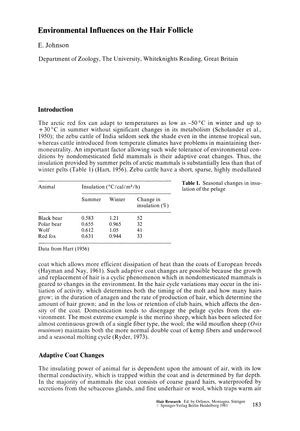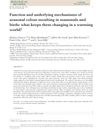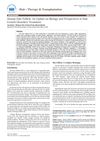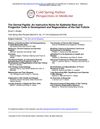Environmental Influences on the Hair Follicle
January 1981
in “
Springer eBooks
”

TLDR Environmental factors like temperature and nutrition affect hair growth, with humans showing seasonal hair growth differences.
The 1981 document examined how environmental factors such as temperature, day length, and nutrition affect hair growth and the hair cycle in animals and humans. It detailed how animals adapt their fur for thermoregulation, with examples like the arctic red fox and zebu cattle showing adaptive changes in coat density and hair characteristics to cope with different climates. The study found that hair growth rates and duration are higher in summer than in winter in humans, indicating a potential influence of temperature. It also discussed the link between molting cycles and sexual cycles, with postpartum hair loss in women as an example. The role of the endocrine system in adjusting seasonal coat changes was highlighted, showing that the molt cycle in wild mammals is influenced by gland activity and hormone levels, including MSH in mammals with seasonal color changes. The document concluded that there are seasonal differences in human hair growth as well, and that the human hair follicle is responsive to psychogenic factors.





